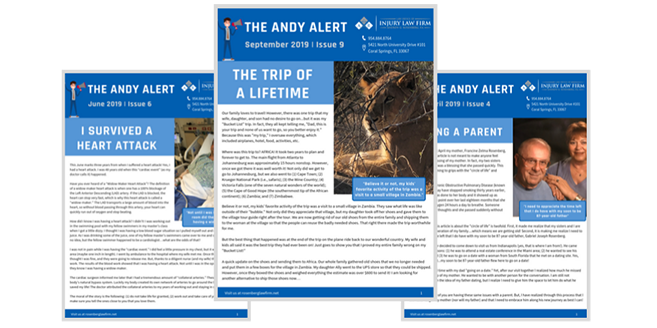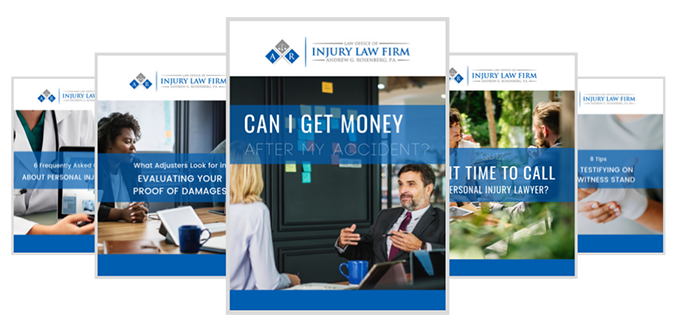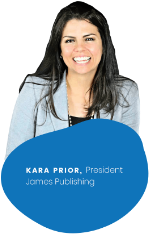
Boosting Referrals for an Energetic Florida Injury Attorney
Boosting Referrals for an Energetic Florida Injury Attorney
With a referral-partner outreach effort and a set of customized client-communications tools developed by James Publishing, he is building lasting relationships with nearby professionals and past clients, and improving his communication with prospects and new clients.

Andrew Rosenberg got into personal injury law by acquiring a busy 25-year-old P.I. practice in Coral Gables, Florida. That should have given him a big leg up in a “very, very, very competitive” niche, he says. “But I didn’t get as many referrals from the former attorney’s client base as I expected.” The founder of the practice had never put much effort into keeping in touch with the doctors, chiropractors and other professionals she had worked with over the years … or her past clients.
That was a big oversight that Rosenberg has recently begun to rectify. With a referral-partner outreach effort and a set of customized client-communications tools developed by James Publishing, he is building lasting relationships with nearby professionals and past clients, and improving his communication with prospects and new clients.
The communication efforts include a monthly newsletter, an array of informational booklets, and an automated drip marketing program that sends a succession of emails–from welcome packages to thank you notes–to clients and prospective clients. Meanwhile, James’ partner outreach effort is connecting him with professionals in the personal injury arena in the Coral Gables area.
Referral Partner Outreach
Satisfied clients are undoubtedly the best source of referrals, Rosenberg says. But aiming to expand his practice, he is branching out. James’s outreach to prospective professional referral partners is helping him do so by making connections for him with chiropractors and other medical professionals who treat injuries.
After an initial attempt to reach out by postal mail, “we are not getting much feedback,” he says. “James switched using to phone and email to calendar 15-minute introductory calls with attorneys and medical professionals. We’ve had a lot better success with that,” says Rosenberg.
“I’ve probably had 3-5 meetings in the past month from that process. The telephone calls made a big difference. They do the research to determine who we should try to reach, and they give me a list of different professionals in the area. It might be criminal attorneys or family attorneys or chiropractors.” He checks the list and removes those he already knows. “Once I get them a go-ahead, they start making phone calls and to schedule appointments and put them on my calendar.”
After he speaks or meets with the prospective referral sources, he adds them to his monthly newsletter list. “They are getting emails that I send out on a weekly basis on different topics, and hopefully, they will join some of my social media things that I do.
“The goal of these meetings with attorneys and doctors and others is just to build a rapport with them so that they feel comfortable with me and know I’m a resource that can be trusted. That’s what causes them to send referrals to me. James introduces me to potential referral relationships that I then grow over time.”
For example, “this afternoon I met Jared face-to-face and had a good conversation with him. Additionally, I had a nice talk with Abby and am meeting her for coffee next week. She is looking to refer to an injury attorney when the opportunity arises … and her boyfriend is a neurosurgeon who just went out on his own.”
Personalized Monthly Newsletter
The newsletter, called The Andy Alert, is “one of the most important things that James Publishing and I worked on together,” he says. A digital version of it, with a video embedded on the last page, goes out by email to his client base, and “we are also sending it out by snail mail every month.”
It took some work to get it to suit his needs. The first mockup that the James team produced was too long for him. “I wanted it to be short, sweet and to the point: a few interesting pieces and that’s it. We’ve continued to tweak it over the past year or so.”
For Rosenberg, that flexibility is one of the most appealing features of James’ approach. In developing the newsletter, “there was a lot of give-and-take, which was great. They have been wonderful to work with,” he says. “We’ve got it to the point now where it is on autopilot and we both know what we need to do to get it done on a monthly basis. It works great.”
The lead item in each issue is usually a commentary he has written — about a trip to Africa with his kids, his kidney stone, his mother’s death, but rarely about law. “If you write about the law, they look at it and toss it. But if you write something interesting and talk about yourself, people will start to relate to you more, and they will start realizing that you are a person not just a lawyer, and that will build a connection,” he says.
That has begun to happen. “When I see people, they speak to me about stuff that I know they wouldn’t talk about unless they had seen it in the newsletter,” he says. Many offered condolences about his mother, and later wanted to know how his father was faring back in the dating pool — something else he’d written about in the newsletter.

Booklets with a Hook
As inducements to sign up for his newsletter, and as branded give-aways for other occasions, James has created with his input a 120-page book and more than a dozen booklets, including What to Do If You Get Hurt, Evaluating Your Proof of Damages, and How Insurance Companies Work.
“I had a lot of say as to what I liked and didn’t like, and to get it to a point where I was comfortable with it,” he says. The finished products have been “very helpful” marketing tools. “First, they give me credibility, and it is definitely one way to show on my website that I’m unique,” he says. James has “given me the ability to have these brochures and this book and everything else. It’s not that I couldn’t have done it, but I could not have done it on my own as quickly. Having a team like that sped up the process.”
Rosenberg adds, “I want to offer educational content for the public.” With his name and contact information prominently displayed in the booklets, they are also another way to keep him top of mind. “The goal is to get people interested in my firm before they have an accident, because eventually, they are going to get in an accident themselves or know someone who has. I want to be the guy they think about when that happens.”

A Steady Drip of Messages
The booklet-request form on his website requires an email address with an opt-in for further mailings. “From that point forward, I make sure that my name stays in front of them with 10-15 emails that go out on a consistent basis over the next two months,” he says.
One version of the drip marketing campaign is geared toward helping newly-retained clients know what to expect as their case proceeds. Another set of emails created by James goes to a list of prospective clients.
“I set up when I want to do it and how often it goes out, but it’s all automated once they sign-up,” Rosenberg says. The emails help prospects and new clients “understand the process of what happens in our industry and what to expect with their case,” all the while building a relationship that can last.
‘Helping Me Stand Out’
The marketing efforts in combination have helped Rosenberg distinguish himself in a very crowded market for personal injury representation. “In today’s world, you need to stand out and I think I could not have stood out if it wasn’t for James Publishing and all of these things that they have provided for me,” he says. “It’s competitive enough as it is. I’m trying to become different and unique, and all of this stuff helps in that process.
“It has been a work in progress,” he adds. “There has been a lot of give-and-take, which is one of the things that I like about James. It’s not like they’re giving me boilerplate, and saying this is how it has to be.”
The marketing plan will require a long-term commitment. “None of this is going to be a quick turnaround, unfortunately. There is no magic pill. You have to put in the time, effort and energy. You’ve got to plant the seeds right now and let them grow,” Rosenberg says.
“I can’t do it on my own. I just don’t have the time. I look at James as a valuable member of the team working toward the overall goal of getting my firm to the next level and beyond.”

